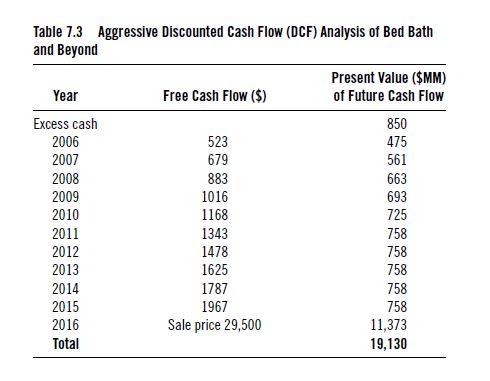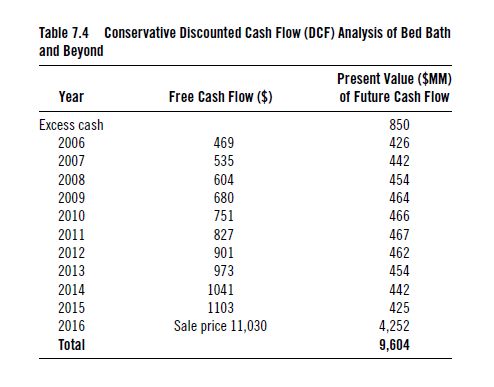A few months ago I had the pleasure of attending the 2016 Pabrai Funds and Dhando Holdings annual meeting in Chicago.
It turns out, this was the last Chicago meeting that Mohnish Pabrai will be holding for his funds going forward.
Mohnish Pabrai and the Horsehead Holdings catastrophe

Mohnish Pabrai
For those unfamiliar with Mohnish Pabrai, he is the founder and CEO of Pabrai Funds, and currently manages roughly $400mm in capital for individuals and institutions. Mohnish Pabrai adheres to a value investment philosophy, wherein he has cloned Warren Buffett’s techniques and has applied them ever since he began investing 1994. Since then, Pabrai has had phenomenal returns over the years. Recently, however, his funds have under-performed over the last five-year stretch, which in Mohnish’s words, is an anomaly. Mohnish is very bullish on the future of his funds, which we’ll get to later.
The evening consisted of a meet and greet, a presentation by Mohnish, Q&A session, followed by a cocktail hour and a dinner. There was a lot to gain from Mohnish Pabrai’s insights and views on his investments.
Like Warren Buffett, Mohnish Pabrai doesn’t typically discuss individual stocks within his portfolio at his meetings, but due to his recent five-year under-performance, and significant portions of his portfolio being concentrated on a few investments, he decided to give further explanations into his reasoning behind his two largest investments: FCA Auto – Fiat Chrysler Automobiles (NYSE: FCAU) and his investments in General Motors warrants.
Mohnish Pabrai’s presentation focused on fund performance and fund outlook, peppered with FCA (Fiat Chrysler) commercials and topped with his views on the future of Pabrai Fund’s investments. As mentioned, the portfolio is currently valued at ~$400 million, although Mohnish believes the intrinsic value is $1 billion+ which will hopefully be reflected within the next 2-3 years (note: current value of FCA Auto and GM warrants within the portfolio are roughly half of the portfolio, or $200 million). This represents 150%+ premium over the current value of its holdings
Pabrai Funds Springs Back After Horsehead
FCA Auto (Fiat Chrysler)
Pabrai Fund’s largest position is in FCA Auto (Fiat Chrysler), representing ~28% of the portfolio. The investment has grown to be an outsized position within the portfolio, which he believes to continue to be significantly undervalued.
The auto business is known to be brutally competitive, where customers have a lot of choices. American auto-makers are unionized and the industry requires high capital expenditures. This isn’t the most conducive environment for a prosperous business. Mohnish Pabrai agrees with all of this points, in fact he even mentioned he “hates the car business”, however, he believes there is still opportunity in the space.
In 2012, Mohnish noticed a few investors who invested in the auto industry. David Einhorn, founder of Greenlight Capital management and (most likely) Ted Weschler, one of Berkshire Hathaway’s head investment managers, invested in General Motors. Knowing them as very thoughtful investors, he decided to drill down into GM and the auto industry, and while doing so, he came upon FCA Auto (Fiat Chrysler).
FCA Auto quickly caught his attention, and he mentioned it was one of the most exciting times in his investment career, during which he ended up reading about the Company and the industry for months and often stayed up until the wee hours of the night doing so. The below was discussed during the presentation, but mostly mirrors and quotes his Q2 2016 investor letter where he was able to fully explain his thesis. Mohnish Pabrai believes the following (Mohnish’s words are highlighted):
1. Sergio Marchionne (CEO of FCA Auto) is a genius
Mohnish Pabrai admits that he probably would have passed on the Company if it weren’t for Serio Marchionne running the business:
“If one had invested ~$1 million in Alusuisse when he became CEO in 1996 and then kept moving those funds as Sergio moved, that $1 million would be worth north of $30 million today. And that includes twelve of those twenty years spent in the lousy car business – with zero prior experience in the auto industry. By 2019, when he intends to hang up his boots and study Theoretical Phyusics (yes, that’s right!), that $1 million will likely have grown to over $100 million.”
“When Marchionne came to Fiat in 2004, it was on life support and almost bankrupt. It had cycled through three chairmen, five CEOs and three heads of Fiat Auto in the previous four years. He nursed it back to health and solid profits so that, in 2009, when the much larger Chrysler was nearly liquidated by the US government and the lights were about to be shut off in Detroit, he was there to pick up the pieces. And he negotiated the purchase with no cash going from Fiat to Chrysler’s owners. If there is a better negotiator than Sergio on the planet, I am not aware of it.”
2. Fiat Chrysler has superior products and a strong brand
When Sergio took over in 2009, there were only 250,000 Jeeps sold in the world, with the majority of them being sold in North America. In 2016, Jeep sales will reach 1.5 million, and is on pace to reach 2 million jeeps in 2018. The Jeep brand is something to be reckoned with, and is a Fiat powerhouse.
“With its World War II legacy and seventy-five-year history, Jeep is an iconic global brand. In China the term people use for SUVs is Jeep. Like Xerox, Fedex, or Kleenex. Products like the Wrangler have virtually zero competition – folks who aspire to own a Wrangler see almost any other SUV inferior. FCA does not break it out, but I am sure FCA nets over $4,000 on average per Wrangler. And, on average, every Jeep nets them north of $2,500. The Chinese joint venture Jeeps are likely half of that. Let’s say those are $1,000/Jeep. In 2018, the Jeep business alone will likely generate pre-tax earnings of over $4 billion.”
“…RAM has wrestled market share from Ford and GM. Since 2009, RAM’s US market share has doubled from 11% to 22%. Their Canadian performance is even better – going from 14% to 30%!
RAM’s global volume is slated to be 620,000 units in 2018. They print money on these with average profits of over $5,000 per truck or commercial van. In addition, outside NAFTA, the Fiat commercial lineup does another 600,000 units a year.
The North American light truck market delivers margins that are similar to those of European luxury imports and this oligopolistic business deserves to be valued along the lines of BMW, Audi, etc.”
3. Fiat owns three auto parts companies that are extremely valuable
Fiat’s auto parts companies – Magenti Marelli, Comau, and Teksid – generate over $10 billion in sales. In the past, the parts businesses have had a measly 3% operating margin. Despite these low margins, Fiat has already received offers north of $2.5 billion for these businesses. These margins are slowly inching upward, quarter after quarter. Sergio’s ultimate goal may be to gain more robust margins and subsequently sell the businesses.
“There have been rumors that FCA has received offers for these businesses from private equity firms for $2.7 billion. FCA is said to
The post Why Famous Value Investor Mohnish Pabrai Is Bullish On FCA Auto & The Overall Car Industry appeared first on ValueWalk.























